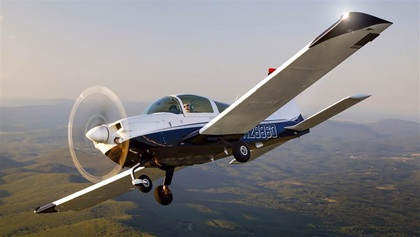Constant-speed propellers
Changing gears on the fly

The FAA’s Airplane Flying Handbook describes a constant-speed propeller as a controllable pitch propeller that keeps the blade angle adjusted for maximum efficiency in most conditions of flight through a propeller control lever in the flight deck. Most training airplanes have blades with fixed pitch angles designed for a compromise between climb and cruise efficiency—while giving up performance at either end. With a constant-speed propeller, the pitch angle of the blades is set for maximum engine horsepower and better climb performance during takeoff. Pilots then fine-tune it for maximum efficiency during cruise.
Oil pressure from the engine is generally used for propeller pitch change. A built-in propeller governor—or limiter—maintains the selected propeller revolutions per minute. It’s geared to the engine crankshaft and controls the prop by oil pressure from an integral oil pump. An increase in oil pressure from the usual 50 to 70 pounds per square inch up to about 300 psi provides the input for blade-angle change. When you advance or retard a propeller lever, the blades twist a few degrees to maintain the selected rpm. Proper operation is observed during engine runup to verify the oil is warmed and flowing freely to move the blades between high and low pitch. For maximum takeoff power, pilots push the propeller lever full-forward to the low or fine pitch/high rpm position. The throttle is also moved full-forward to achieve the maximum allowable manifold pressure. Now you’re in “first gear.”
When leveling out for cruise, first the throttle lever is moved rearward to the desired manifold pressure, then the propeller control is pulled to select the desired rpm and a higher or coarse pitch/low rpm position. A higher blade angle leads to better flight efficiency in cruise. Engine power and speed are optimized as we shift into “overdrive.” Before landing, move the propeller lever control full-forward to be ready for a go-around or a missed approach, with the prop preadjusted for maximum takeoff performance if needed.





